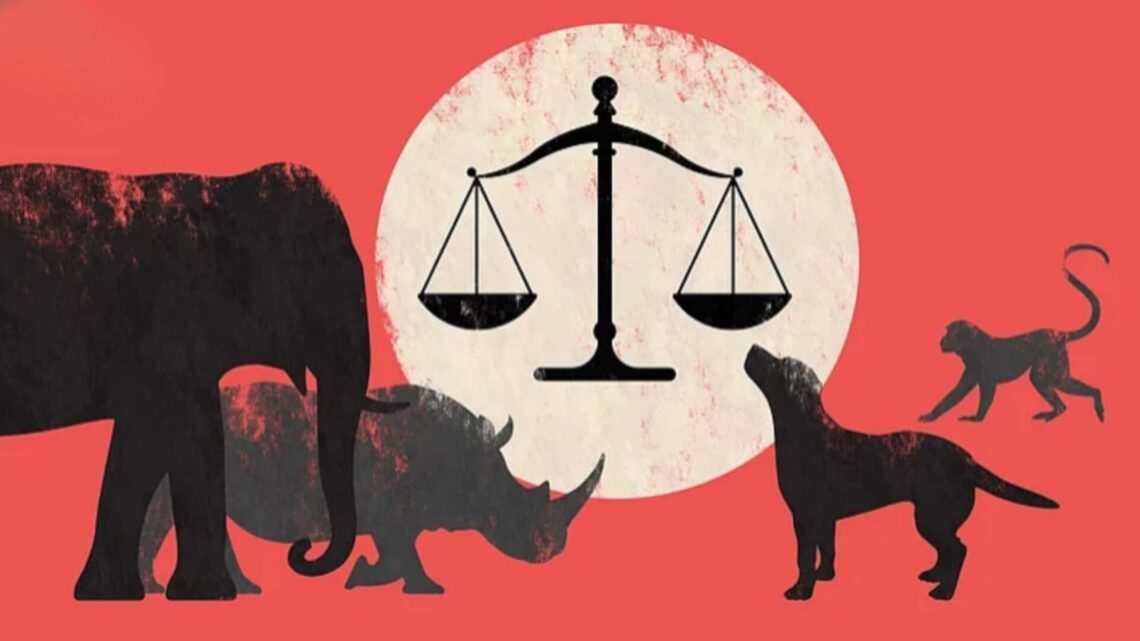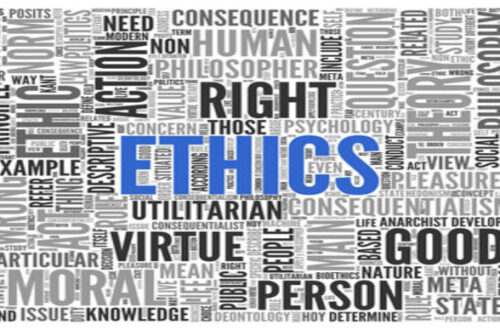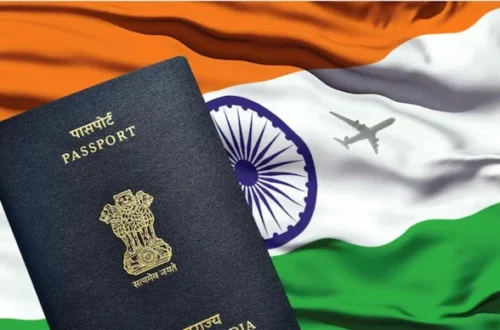Abstract
Animals are an important part of human lives. We along with the animals form the ecosystem in nature. Animal rights in Indian has from a very long time remains an ignored issue. Recently, certain merciless acts inflicted on animals have come into light which raises the question on legal inadequacy of penal sanctions imposed. Globally, efforts have been made to make a comprehensive legal framework for protecting the rights of animals. However, Indian legal framework remains blur in this arena. The cruelty inflicted on animals under the garb of religion, cultural, entertainment and in endless ways is outrageous and inhumane. The idea of speciesism is making people do unlawful and unethical acts against animals which results into grave violation of animal’s right. The court sometimes shows liberal approach regarding this issue and that leads to abuse, exploitation of animals. To prevent the rampant cruelty inflicted on animals not only criminal liability but also civil liability is the need of the hour. This paper aims to throw light on the reformulation of weak penal provisions and evaluate ways to improve them. It will highlight the objectification of animals that has been prevalent in India. Country wise analysis with regards to animal rights issue will be focused. Global provisions in comparison with India will be highlighted. The present study speaks out for animals, their rights, their safe existence and concludes on the note that certain amendments in penal provisions along with policy reformulation is indispensable.
Keywords: Abuse, Rights, Exploitation, Animals, Reformulations, Penal Provisions.
Introduction
Organizations
Legislations
Case Laws
21st Century- Development
Humans And Non-Humans
The Source Of Duty: Benevolence Or Duty?
Introduction
“The Greatness of the nation and its moral progress can be judged by the way it’s animals are treated”.
- Mahatma Gandhi
These lines by Mahatma Gandhi aptly describes the importance of protecting animals in society. The recent death of a younger pregnant elephant in Kerala’s Palakkad district has once again stirred up the debate on the rights of animals in India. Preliminary reports suggest that elephant ate pineapple stuffed with firecrackers which exploded in her mouth. This made her incapable of eating or drinking anything. Excruciating with pain, pregnant elephant stood for a whole day in river then eventually collapsed to death.[1] This incident has triggered a new debate about cruelty inflicted on animals in India.
The Indian landmass is one of the globe’s top twelve mega-biodiversity regions. India has some of the world’s most significant biological diversity since it has only 2 percent of the total landmass of the world but is home to approximately 7 percent of the world’s flora. India is home to almost 6.5 % of world free- living animal species. According to the International Union for Conservation of Nature (IUCN) Red List (2008/2010), India holds around 2,530 vertebrate species. Protected areas in India include eighty national parks, among them twenty-eight tiger reserves governed by Project Tiger and 441 wildlife sanctuaries.[2]
History of protecting animals in India goes back to the pre-Vedic period. The Hindu relationship with animals began with the holistic view of life adopted in the Vedas. There are therefore numerous references to plants and animals in almost all of Hindu literature. Archaeon-zoological studies highlights that India has been home to a wide variety of animals for thousands of years.[3] Importance of animals in Hinduism depends upon the status which has been accorded to them. In Hindu mythology some of the Gods are considered as incarnation of animals on Earth, e.g., the descent of God in the form of Matsya, (the fish), Varaha (the boar), Kurma (the tortoise), and Narasimha (the man-lion). The epic Ramayana revolves around the life of lord Ram and his wife Sita, but it also contains various animals as crucial part of epic, such as Lord Hanuman. As the Holy Gita says, ““The living entities in this conditioned world are My eternal, fragmental parts.”[4] . This shows love for animals in Hinduism which has given them status similar to human beings. Hinduism, Jainism and Buddhism are three religions which had its birth in India. Among all the three religion it is Jainism which follows the principle of non-violence with utmost sincerity. Ahimsa or compassion towards animals is the main teaching of Jainism and Buddhism. The Islamic religion has always viewed animals as a special part of God’s creation. The Qur’an, the Hadith, and the history of Islamic civilization offer many examples of kindness, mercy, and compassion for animals. For example, the Qur’an says, “There is not an animal on Earth, nor a bird that flies on its wings – but they are communities like you.” In present time, Ahimsa or Compassion toward animals as elucidated by our holy scriptures has taken a different turn entirely. Incalculable amount of despotism and tyranny are inflicted on mum animals in the name of religion and culture. According to T.S.R Subramanian report, nature and animal worship has been part of animal culture. For example; Nag Panchami in many states is celebrated and snakes are worshipped for five days in Shravan month and this is a thousand-year-old custom. Report says that snakes are not harmed, indeed they are worshipped during this period. But in reality, capture of snakes, birds lead to death of many more. For each bird which is kept in captivity, there are thousands who die during transportation and capture. Several animals cannot breed in captivity. [5]
In Bali Pratha, animals are slaughtered and killed to appease gods, based on religious beliefs and aboriginal practices. However, no religion on Planet is gospeller of brutality or asks its disciple to execute creatures.
organizations
Animal Welfare Board Of India
Animal welfare board of India is a statutory and advisory body whose work is to promote animal welfare in India. It was established in 1962 under section 4 of the Prevention of Cruelty to Animals act 1960. Its mandate is to prevent infliction of unnecessary pain and suffering on animals. Animal welfare board works to ensure that animal welfare laws are religiously followed in the country. A remarkable work in the field of animal rights has been done by the board.
Peta
People for Ethical Treatment of animals (PETA) is the largest animal right organisation in world with more than 6.5 million supporters and members. PETA founded in year 1980 and it is completely dedicated to protect animals. PETA educate policymakers and create awareness among masses to promote kind behaviour for animals. Animals have rights and interest and their interest should be taken care of whether they are useful to humans or not. PETA as an organisation is against the doctrine of Speciesism, which means supremacy of human beings over other beings. According to Peter Singer, a utilitarian philosopher, speciesism is the reason why we humans choose to ignore the suffering of non-human animals[6] PETA mainly works in four areas where animals are subjected to cruelty the most and for longest period of time – entertainment industry, food industry, clothing industry and in laboratories. It also works to protect domestic animals from unnecessary cruelty.[7] PETA first case in 1981 silver spring monkey caseresulted in arrest and criminal conviction of animal experimenter in U.S on charges of animal cruelty, confiscation of that laboratory animals.[8]
Fiapo –
Federation of Indian Animal Protection Organisation (FIAPO) is an apex animal rights organisation of India. FIAPO was officially founded in year 2010. It protects the right and interest of animals at local and national level. Personhood for Animals are some of the major campaigns which are undertaken by FIAPO[9]. FIAPO has some long terms goals like-
* to end use of animals in food and clothing
*end pet industry and develop more friendly and compassionate human – animal friendly relationship
* to end use of animals in laboratories for experiments
* to stop the use of working animals
* stop the use of animals in entertainment industry and also to stop animal sacrifice
*improve the framework for animal protection in country[10]
Legislations
Prevention Of Cruelty To Animals Act, 1960
In our country Animals occupy non- human status they are treated as property or mere commodity. Penal liability enumerated in PCA act 1960 is just Rs. 50 for any kind of harm inflicted on animals.[11] It is the highest possible penalty imposed in the present day which is highly outrageous for the rights of animals. This insufficient amount of liability imposed clearly indicates the lack of strict legal penalty. PCA has been severely criticized for being inadequate in protecting animals from cruelty. Section 11[12] of PCA is main section of the Act which punishes various forms of cruelty. It renders beating, kicking, over-riding, over-driving, over-loading, torturing, which causes unnecessary pain or suffering to any animal punishable[13]. Odisha High Court in Bali Parda v. Nira Parida[14] had ruled that beating animals in general is not a punishable offence under section 11(1) of the act, instead beating animals in such a way as to inflict unnecessary pain and suffering is an offence. The abovementioned judgement is blurred in itself as it does not define the word “general” and can be misused by people.
Needs Amendment
Certain amendments are important to be made in PCA in order to protect animals from cruelty and excessive pain. Amendments could be made in Two ways – Firstly, by increasing the monetary penalty which are imposed. Increasing monetary penalty will act as deterrent for common people. According to 2011 draft, penalty to ten thousand rupees to maximum of twenty-five thousand rupees should be imposed. Secondly, by differentiating offences in section 11 into severe and less severe offence and making severe offence as non -cognizable and non- bailable offence.[15]
Wildlife Protection Act, 1972.
Although we have such a great legislation in place but this act in itself provides killing of animals[16] in one way or the other which is making the whole purpose of the act futile and fruitless. In at least nine States, man and wildlife are in serious conflict[17]. The affectability of the act always gets stuck on its implementation which is a trap for every Indian law. . Though the Wildlife Act was amended in 1986, 1991, 2000, 2003, and 2008, the indifferent attitude of some administrators and the lack of implementation are still a major concern. There has been far more animal slaughter in independent India than there was in India under British rule or during the period of Muslim kings. The killing of animals during 1998–2008 broke all previous records. India may now have the largest number of animals used in agriculture in the world. Meat production in India is estimated to be about 2.3 million tons per annum.
Case Laws
We have certain precedents in place for the rights of animal which should be taken into cognisance while determining the state of animal’s abuse in India.
In Ramesh Sharma v. State of Himachal Pradesh & Ors – The Himachal Pradesh High court held that animal sacrifice could not be treated as indispensable to practice religious belief. If any act affects the fundamental nature or core of religion then only it can be treated as essential religious belief of that particular religion. As far as animal sacrifice is considered it will not bring fundamental change in Hindu religion. Court also noticed that sacrificing an animal in temple is not correct as temples are public places and in public place conscience of every devotee should be taken care of.
The Animal Welfare Board of India v. A. Nagaraja and others (Jallikattu Case) is one of the prominent judgements related to animals right in India. Supreme court in 2014 pronounced this judgement recognizing the dignity and honour of animals as mentioned in article 21 of India constitution. According to article 21 every human has right to live a life of dignity and honour. Supreme court in this judgment said right of life with dignity and honour applies to animals too and they could not be deprived of it. Supreme court further observed that article 51 (g) and (h) are indispensable for animal rights in India. Rights and freedom guaranteed to animals under section 3 and 11 of prevention of cruelty to animals’ act 1960 and article 51(g) and (h) has to be read and interpreted together.
In Sardar Syedna Taher Saifuddin Sahib vs. State of Bombay, the Apex court observed that there may be some practices like animal’s sacrifice or human sacrifice which could be harmful to society at large. In such instances state has power to intervene through various legislations, to restrict or to completely stop such harmful practices.
In Gauri Maulekhi vs union of India and others –Supreme court in 2014 banned the transport of animals from India to Nepal for gadhimai festival, this step helped in decreasing number of animals sacrificed in 2014. Moreover, supreme court also approved several welfare recommendations related to animals such as regulation related to cattle market, animal market and creating infrastructure for animals.
In the case of Animals and Birds Charitable Trust v. Municipal Corporation of Greater Mumbai[18] the hon’ble court ruled out that the use of horse-driven carriages for joyrides was solely for human pleasure and was an avoidable human activity. Such non-essential, avoidable human activities thus, violate the basic rights granted to animals, under the Constitution and the concerned statutes.[19]
21st Century- Developments
At, present India has many laws and regulations at hand but much still awaits to be done. The right understanding and implementation of laws is necessary. Several countries have already set an empowering example in this arena which inspires the others to also do better. Followings are:
- The Austrian animal welfare act, 2004 equalizes the life of an animal with that of a human being. Austria has been one of the strictest countries in the world against the animal cruelty. The animal personhood granted by Austria is a real breakthrough.
- The remarkable U.K. animal welfare legislation which is a protagonist in the realm of animal rights has a strict penalty of 51-week maximum jail term plus a fine of 20,000 pounds upon cruelty and negligence of animals. Instances of animal abuses are bound to be in namesake numbers where such penal sanctions are prevalent.
- Germany is the first country in the European Union to give animals the constitutional protection as the Weimer Constitution reads as, “The state takes responsibility for protecting the natural foundations of life and animals in the interest of future generations.[20]
Such provisions point out the need for an open and aware approach towards the animals legally, morally, culturally, socially as well as religiously. India is doubtlessly progressing in this arena with the rational judgments coming by the experienced jurists yet this issue must not be ignored today or tomorrow.
Similarities Between Humans And Non-humans
Evolutionary studies have provided explanations of altruistic behaviours in humans and nonhuman animals, and suggest similarities between humans and some non-humans.[21] Scientists such as Jane Goodall and Richard Dawkins believe in the capacity of nonhuman great apes, humans’ closest relatives, to possess rationality and self-awareness[22] A research in 2010 showed that dolphins are second in intelligence only to humans and presented the idea to regard then as nonhuman persons. MRI scans were used to compare the dolphin and primate brain; the scans indicated there was “psychological continuity” between dolphins and humans. The research suggested that dolphins are able to solve complex problems, use tools, and pass the mirror test, using a mirror to inspect parts of their bodies.[23] [24] The idea that nonhuman animals are worthy of prima facie rights is to say that, in a sense, animals have rights that can be overridden by many other considerations, especially those conflicting a human’s right to life, liberty, property, and the pursuit of happiness.[25] That what makes the case for “Veganism” true and urgent need of the hour. David Pearce, a transhumanist philosopher, has argued that humanity has a “hedonistic imperative” to not merely avoid cruelty to animals or abolish the ownership of non-human animals, but also to redesign the global ecosystem such that wild animal suffering ceases to exist[26]. The 2019 IPBES Global Assessment Report on Biodiversity and Ecosystem Services found that industrial agriculture and overfishing are the primary drivers of the extinction crisis, with the meat and dairy industries having a substantial impact[27].[28] On August 8, 2019, the IPCC released a summary of the 2019 special report which asserted that a shift towards plant-based diets would help to mitigate and adapt to climate change.[29] Thus, it proves the case for the rights of animals and their security, safety like human beings.
The Source Of Duty: Benevolence Or Justice?
A duty-based approach rests on the human beings who owe a duty towards the non-human being. But a fundamental question arises that where does that duty emanated from?
- Entitlement Approach Of Nussbaum
According to Martha Nussbaum, this theory is based on the premise that animals have an entitlement (as distinguishable from a right) to a ‘dignified existence’[30] This approach has been borrowed from the major judgment N.R. Nair judgment in 2000[31]. This dignifies existence comes under 10 entitlements which are as follows: Life, Bodily Health, Bodily Integrity, Senses, Imagination and Thought, Emotions, Practical Reason, Affiliation, Association with other Species, Play and Control Over One’s Environment. She considers them giving entitlements on the basis of these capabilities.
- Theory Of Justice In a Duty Based Approach
Unlike the western approach where it was believed that man was the centre of the universe, the eastern approach was that human being was only a part of the universe. There was also a time when the animal killings were completely prohibited. This model of law and order largely rested on the duty-based approach of humans, towards both other humans and non-human animals which was further based on principles of dharma.[32] Furthermore, the Indian constitution also includes the directive principles of state policy[33] and fundamental rights[34] but these are not enforceable in nature rather provide principles of governance, legislations and jurisprudence. [35]
It is consequently concluded that the source of human duty towards non-human animals is the commitment to ensure the ‘dignified existence’ of animals. The emphasis should not be on the inconsistent concept of the entitlement of the animal but on the concrete duty of human beings.[36]
Conclusion
Despite having so many authorities, organisations we are still comes in the backward category when it comes to issue of animals right. Unfortunately, the legal policies for conserving the forests and free-living animals have not been very successful, despite the fact that safeguarding the forests has been included in the list of fundamental duties of the citizens of India (article 51(g) of the Indian constitution); India is perhaps the only country in the world that has provided for protection of animals under its constitution. To catch up with the pace of twentieth-century industrialization, India needed the latest machinery and foreign exchange, and to achieve this goal, it exported resources that were already scarce to the poor population. Meat export actually began quite late, when the government of India issued licenses to big slaughterhouses largely influenced by the Arab markets. This needs to be curbed as this beautiful creation of god should not be taken for granted. We as a human being do not possess the right to kill animals under any law, legislation and act. The moral progress of India which has been degrading from a very long time has reached to the acne and needs to be upgraded. Every single life count and has value. Just like us, they also want to life free from agony, pain. They also possess life and want happiness, safety and comfort of family. We need to imbibe and make people morally strong about the values like kindness, love and compassion towards this issue. So, Live and let them live.
Determining Liability
As mentioned above the penal sanctions in PCA has failed to adequately ensure the cruelty inflicted on animals. We need to broaden the scope of liabilities to sufficiently safeguard the interest and rights of animals. The present liability only imposes criminal liability which equals to nothing. Now, we will discuss a new liability in this section.
Who will initiate suits on behalf of animals?
Apart from imposing criminal liability, civil liability will enable the state through the doctrine of parens patriae which was evolved in the case of Ramesh Sharma v. State of Himachal Pradesh[37]. This is where the principles of “guardianship” and “trusteeship” comes into picture where the state acts as a guardian taking into account the welfare of mum animals. Courts may also assume the roles of parens patriae in India.[38] This is relevant because the doctrine of parens patriae provides that the State has the duty and authority to protect those legally unable to act on their own,[39] such as minors, insane or incompetent persons.[40]
Why Civil Liability?
Civil suits on behalf of animals will lead to greater enforcement of law and, will lead to mitigate the effects of the species bias which exists presently. [41] Furthermore, the imposition of civil liabilities will entail that the violators will also have to pay damage in addition to the fine. The suggested measures in the legal section of PCA and additional civil liabilities will strengthen the regulations regarding animal rights issue in India.
[1]Kerala pregnant elephant drowned herself to death after explosion in mouth, 3 suspects in custody | Key points , June 5, 2020 08:04 IST,https://www.indiatoday.in/india/story/kerala-pregnant-elephant-drowned-herself-to-death-after-explosion-in-mouth-3-suspects-in-custody-key-points-1685659-2020-06-05
[2] Chapter Title: THE TREATMENT OF ANIMALS IN INDIA Chapter Author(s): B. K. SHARMA and SHAILJA SHARMA Book Title: The Global Guide to Animal Protection Book Editor(s): Andrew Linzey Published by: University of Illinois Press Stable URL: http://www.jstor.com/stable/10.5406/j.ctt2tt9r9.20
[3][3]Chapter Title: HINDUISM AND ANIMALS Chapter Author(s): THILLAYVEL NAIDOO Book Title: The Global Guide to Animal Protection Book Editor(s): Andrew Linzey Published by: University of Illinois Press Stable URL: http://www.jstor.com/stable/10.5406/j.ctt2tt9r9.168
[4] Bhagavad Gita; Chapter 15, Verse 7. Bhagavad Gita has been the most pious and useful holy scripture whose several noble principles still have relevance to guide and regulate human conduct in Indian society.
[5] Sanctioning cruelty in the name of faith?, JUNE 11, 2015 01:58 IST https://www.thehindu.com/opinion/op-ed/sanctioning-cruelty-in-the-name-of-faith/article7302545.ece
[6] PETER SINGER, PRACTICAL ETHICS 3 (2nd ed., 1993).
[7] https://www.peta.org/about-peta/
[8] https://www.peta.org/about-peta/learn-about-peta/history/
[9] http://www.fiapo.org/fiaporg/our-campaigns/
[10] http://www.fiapo.org/fiaporg/mission-and-vision/
[11] The Prevention of cruelty to animals’ act 1960 ,11(1).
[12] Section 11 of PCA.
[13] The prevention of cruelty to animals’ act 1960, 11 (1)(a).
[14] Bali Parda v. Nira Parida.
[15] “Abha Nadkarni & Adrija Ghosh, Broadening the Scope of Liabilities for Cruelty against Animals: Gauging the Legal Adequacy of Penal Sanctions Imposed, 10 NUJS L. REV (2017), http://docs.manupatra.in/newsline/articles/Upload/1CB73629-1C2A-410C-B437-42A19EC697A5.pdf
[16] Section 11 (b) allows hunting of wild animals if the chief wildlife warden “is satisfied that any wild animal specified in schedules II, III or IV has become dangerous to human life or to property”. Section 61 gives the power to add or delete any entry to or from any schedule or transfer any entry from one part of the schedule to another part of the same schedule or from one schedule to another.
[17] In Karnataka, man, wildlife and cattle are locked in a fight over land and fodder. Over 6,000 elephants roam free in Karnataka, primarily in six southern districts (Mysuru, Kodagu, Hassan, Mandya, Bengaluru Rural and Bengaluru Urban) near the 6,724-sq.-km Mysore Elephant Reserve. The competition is most acute in Bandipur and Nagarahole, which form the core of the elephant-cum-tiger reserve; while Bandipur is surrounded by 180 villages, Nagarahole is surrounded by 100-odd villages
[18] Animals and Birds Charitable Trust v. Municipal Corporation of Greater Mumbai 2015 SCC OnLineBom 3351.
[19] Animal Welfare Board of India v. A. Nagaraja (2014) 7 SCC 547, ¶71; Animals and Birds Charitable Trust v. Municipal Corporation of Greater Mumbai,2015 SCC OnLine Bom 3351, ¶40 (Referred to the Supreme Court’s decision in A. Nagaraja to come to this conclusion).
[21] Lawrence (2004) Animal Acts: Configuring the Human in Western History. Journal of Popular Culture, 37(3), 555
[22] The Great Ape Project: Equality beyond humanity. 1993. Fourth Estate publishing, London, England.
[23] Reiss, D. (2011). “Dolphin Research: Educating the Public”. Science. 332 (6037): 1501. Bibcode:2011Sci…332.1501R. doi:10.1126/science.332.6037.1501-b. PMID 21700853.
[24] Leake, Jonathan (January 3, 2010). “Scientists say dolphins should be treated as ‘non-human persons'”, The Sunday Times.
[25] Animal Rights, https://en.wikipedia.org/wiki/Animal_rights
[26] Thweatt-Bates, Jeanine (2016). Cyborg Selves: A Theological Anthropology of the Posthuman. London: Routledge, 100–101 (first published 2012).
[27] McGrath, Matt (6 May 2019). “Humans ‘threaten 1m species with extinction'”. BBC. Retrieved 3 July 2019. Pushing all this forward, though, are increased demands for food from a growing global population and specifically our growing appetite for meat and fish.
[28] Watts, Jonathan (6 May 2019). “Human society under urgent threat from loss of Earth’s natural life”. The Guardian. Retrieved 3 July 2019. Agriculture and fishing are the primary causes of the deterioration. Food production has increased dramatically since the 1970s, which has helped feed a growing global population and generated jobs and economic growth. But this has come at a high cost. The meat industry has a particularly heavy impact. Grazing areas for cattle account for about 25% of the world’s ice-free land and more than 18% of global greenhouse gas emissions.
[29] Schiermeier, Quirin (8 August 2019). “Eat less meat: UN climate-change report calls for change to human diet”. Nature. 572(7769): 291–292. Bibcode:2019Natur.572..291S.
[30] Granting animals rights under the constitution: A misplaced approach? An Analysis in light of animal welfare board of India v. A Nagaraja, Jessamine Therese Mathew & Ira Chadha-Sridhar
[31] N.R. Nair v. Union of India, AIR 2000 Ker 340.
[32] S.K. Purohit, Ancient Indian Legal Philosophy 235 (2001).
[33] The Constitution of India, 1950, Arts. 36-51 (Art. 48A specifically deals with protection of animal life under the Constitution).
[34] The Constitution of India, 1950, Art. 51A (Cl. (g) is specific to caring for the natural environment and animals)
[35] The Great Ape Project: Equality beyond humanity. 1993. Fourth Estate publishing, London, England.
[36] Supra 14.
[37] Ramesh Sharma v. State of Himachal Pradesh
[38] Aruna Ramachandra Shanbaug v. Union of India, (2011) 4 SCC 454.
[39] George B. Curtis, The Checkered Career of Patens Patriae: The State as Parent or Tyrant? 25 DEPAUL L. REV.
895, 895-97 (1976).
[40] Charan Lal Sahu v. Union of India, (1990) 1 SCC 613 ¶¶ 35, 36.
[41] 10 NUJS l. Rev (2017)





